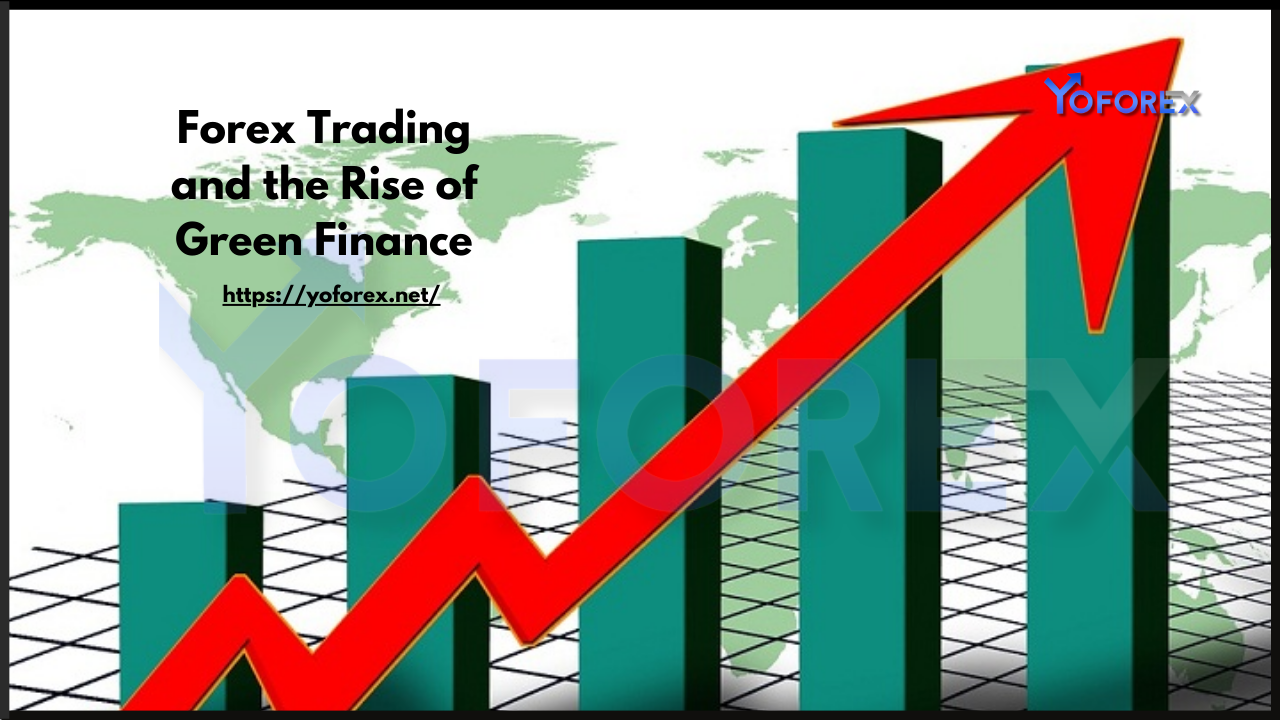The global financial landscape is undergoing a profound transformation as sustainability becomes a central focus for investors, governments, and corporations. In the realm of forex trading, this shift is manifesting in the rise of green finance and the growing importance of sustainable currencies. As environmental, social, and governance (ESG) principles gain traction, forex traders are increasingly aligning their strategies with sustainable investing, creating new opportunities while contributing to a greener future. This blog explores the intersection of forex trading and green finance, highlighting the potential of sustainable currencies and the strategies traders can adopt to thrive in this evolving market.
The Intersection of Forex Trading and Green Finance
Forex trading, the largest financial market in the world, has traditionally been driven by economic indicators, geopolitical events, and interest rate policies. However, the growing emphasis on sustainability is reshaping this landscape. Green finance, which focuses on investments that support environmental sustainability, is now influencing currency markets. Countries that prioritize renewable energy, carbon reduction, and sustainable development are seeing their currencies gain traction among ESG-conscious investors79.
For instance, currencies from nations like Norway and New Zealand, which are leaders in renewable energy adoption, are becoming attractive to traders. These currencies not only reflect strong economic fundamentals but also align with global efforts to combat climate change. By integrating ESG factors into their trading strategies, forex traders can capitalize on the growing demand for sustainable investments while contributing to positive environmental outcomes57.
The Role of ESG Factors in Currency Valuation
Environmental, social, and governance (ESG) factors are increasingly influencing currency valuations. Countries with robust environmental policies, such as carbon reduction targets and renewable energy investments, are perceived as more stable and forward-thinking. This perception attracts foreign investment, strengthening their currencies. Conversely, nations that lag in sustainability efforts may face economic stagnation and currency depreciation79.
For example, the Norwegian krone (NOK) and the New Zealand dollar (NZD) have benefited from their countries’ commitments to green energy and sustainable practices. Traders who analyze ESG metrics, such as a nation’s carbon footprint, renewable energy capacity, and environmental regulations, can identify currencies with long-term growth potential57.

Opportunities in Sustainable Currencies
- Renewable Energy Leaders: Currencies from countries investing heavily in renewable energy, such as Norway, New Zealand, and Germany, offer promising opportunities. These nations are not only reducing their carbon emissions but also positioning themselves as leaders in the global energy transition79.
- Green Bonds and Sustainable Projects: Countries issuing green bonds to fund environmentally friendly projects are attracting ESG-focused investors. For instance, the European Union’s green bond initiatives have bolstered the euro’s appeal among sustainable investors9.
- Emerging Markets with Green Agendas: Emerging economies like Indonesia and Malaysia are making significant strides in sustainability, particularly in renewable energy and digital transformation. Their currencies, such as the Indonesian rupiah (IDR) and the Malaysian ringgit (MYR), are becoming increasingly attractive to traders focused on long-term growth110.
Challenges and Risks in Sustainable Forex Trading
While sustainable currencies offer exciting opportunities, traders must navigate several challenges:
- Volatility and Geopolitical Risks: Emerging markets with green agendas may experience currency volatility due to geopolitical tensions or economic instability. For example, trade disputes or policy changes can impact currency values.
- Lack of Standardization: The absence of universal ESG standards makes it difficult to compare the sustainability performance of different countries. Traders must rely on diverse data sources and frameworks, such as the Task Force on Climate-related Financial Disclosures (TCFD), to assess ESG risks.
- Balancing Profit and Sustainability: Traders must strike a balance between achieving financial returns and adhering to sustainable principles. This requires careful risk management and a long-term perspective.
Strategies for Sustainable Forex Trading
- ESG Integration: Incorporate ESG factors into currency analysis by evaluating a country’s environmental policies, social initiatives, and governance practices. Tools like ESG ratings and sustainability reports can provide valuable insights.
- Diversification: Diversify your portfolio by including a mix of sustainable currencies from developed and emerging markets. This approach reduces risk while capturing growth opportunities.
- Impact Investing: Allocate a portion of your trading profits to support sustainable projects or donate to organizations working towards environmental and social goals. This aligns your trading activities with your values.
- Technological Tools: Leverage AI and machine learning to analyze ESG data and identify trends in sustainable currencies. Platforms like OctaTrader offer predictive insights and advanced analytics to enhance decision-making.
The Future of Forex Trading in a Green Economy
As the world transitions to a low-carbon economy, sustainable forex trading will become increasingly important. Technological advancements, such as blockchain and AI, will enable greater transparency and efficiency in ESG data analysis. Moreover, the rise of digital currencies and decentralized finance (DeFi) could further revolutionize the forex market, offering new opportunities for sustainable investing.
Traders who embrace sustainability will not only benefit from financial returns but also contribute to global efforts to combat climate change and promote social equity. By aligning their strategies with ESG principles, forex traders can play a pivotal role in shaping a more sustainable and resilient financial system.
Conclusion
The rise of green finance is transforming the forex market, creating new opportunities for traders to align their strategies with sustainability goals. By focusing on sustainable currencies, integrating ESG factors, and adopting innovative tools, traders can navigate the complexities of the forex market while contributing to a greener future. As the world moves towards a more sustainable economy, forex trading will continue to evolve, offering exciting possibilities for those who embrace the principles of green finance.

